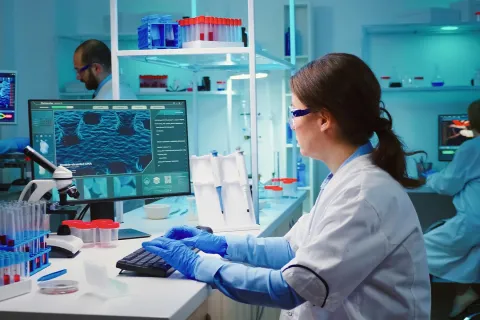International medical relief plays a crucial role in promoting health and well-being around the world. In an increasingly interconnected world, it is essential to take a global approach to addressing the health challenges faced by disadvantaged communities. But what is it? It is healthcare provided by organizations and healthcare professionals from different countries, with the aim of delivering quality healthcare to those who need it most.
One of the reasons why international medical aid is so important is because it addresses inequality in access to healthcare. In many disadvantaged communities around the world, people lack access to basic medical services due to lack of resources, poor infrastructure and underdeveloped healthcare systems. These agencies work to bridge this gap by providing medical care and health services to those who cannot otherwise access them.
Table of Contents
Access to health care in disadvantaged communities: How they make a difference.
In disadvantaged communities, lack of access to adequate medical care has devastating consequences for people’s health and well-being. International aid groups make a difference by providing access to vital medical services, including primary care, emergency services, medicines and specialized treatments. This assistance helps diagnose and treat illnesses, prevent complications and improve the quality of life for people who otherwise would not have access to such services.
In addition to access to medical care, they also focus on educating communities about health issues and promoting disease prevention. International health professionals work with local communities to provide training, information and resources to help prevent disease and promote healthy habits. This is especially important in areas where lack of knowledge and lack of resources contribute to the spread of preventable diseases.
Outreach and Coverage: Reaching those who need it most.
International medical aid strives to reach those who need it most, regardless of their geographic location or socioeconomic status. This involves reaching remote rural communities, areas affected by conflict or natural disasters, and marginalized populations that are often ignored by local health systems. It relies on mobility and the ability to respond quickly to emergencies and health crises.
To achieve effective outreach and coverage, organizations work closely with governments, non-governmental organizations and other local entities. This ensures that resources and expertise are used effectively and efficiently, and that unnecessary duplication of effort is avoided.
Coordination and collaboration are essential to maximize the impact of medical aid and ensure that it reaches those who need it most.
Overcoming Language and Cultural Barriers: The Importance of Communication
One of the key challenges in providing medical care is overcoming language and cultural barriers. In many cases, international healthcare professionals must communicate in foreign languages and adapt to different cultural norms and practices. Effective communication is critical to ensure that patients understand their diagnosis, recommended treatments and aftercare guidelines.
International medical aid organizations strive to recruit healthcare professionals with appropriate language and cultural skills, or provide interpreters and translators to ensure clear and effective communication. In addition, training is conducted to foster cultural sensitivity and understanding of local practices and beliefs. This not only improves the quality of medical care, but also strengthens trust between international healthcare providers and local communities.
Collaboration as a Key to Success: The Importance of Partnerships
International medical aid cannot achieve its maximum impact without collaboration and strategic partnerships. Organizations collaborate with a variety of partners, including governments, non-governmental organizations, academic institutions, private companies and local communities. These partnerships combine resources, expertise and experience to address health challenges more effectively.
Collaboration can involve sharing financial resources, coordinating healthcare efforts, sharing knowledge and collaborating on research projects. By joining forces, organizations can expand their reach, optimize the use of resources, and more comprehensively address health problems in underserved communities.
Improving healthcare infrastructure: How it contributes to health systems development.
In addition to providing direct assistance to disadvantaged communities, they also work to strengthen and improve the healthcare infrastructure in recipient countries. This involves investing in the construction and renovation of medical facilities, providing medical equipment and supplies, training local health professionals and improving existing healthcare systems.
By strengthening the healthcare infrastructure, they contribute to the development of sustainable healthcare systems. This not only improves countries’ ability to provide long-term healthcare, but also helps prevent future health crises and promotes the well-being of communities at large. Investing in healthcare infrastructure is an investment in the future and the health of generations to come.
Long-term impact: promoting sustainable health and well-being.
Medical aid goes beyond immediate medical care and seeks to promote a long-term impact on the health and well-being of disadvantaged communities. This involves addressing the underlying causes of health problems, such as poverty, lack of education, limited access to clean water and basic sanitation, and armed conflict.
International medical aid works in collaboration with other areas of development, such as education, food security, water and sanitation, to address these problems in a comprehensive manner. In doing so, it creates an enabling environment for sustainable health and well-being, where communities have access to quality medical care, health education and healthy habits, nutritious food, and safe environmental conditions.
Conclusion
These organizations play a critical role in providing healthcare to disadvantaged communities around the world. From addressing inequality in access to health care to overcoming language and cultural barriers, international medical aid makes a difference in providing quality health care to those who need it most. Through collaboration and strategic partnerships, resources are optimized and health care infrastructure is strengthened, contributing to the development of sustainable health systems. Ultimately, it not only provides medical care, but also promotes long-term health and wellness in underserved communities.












